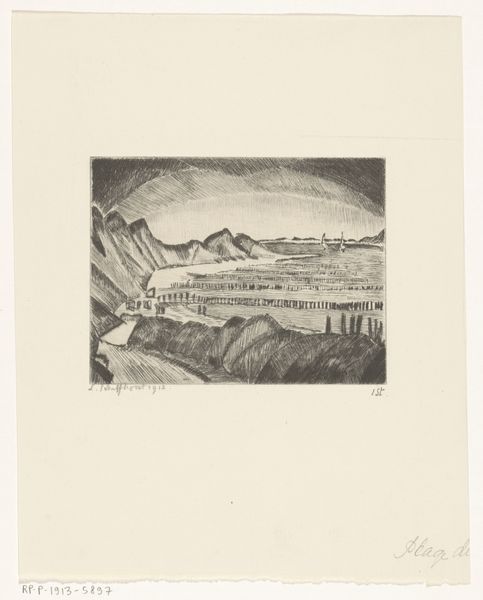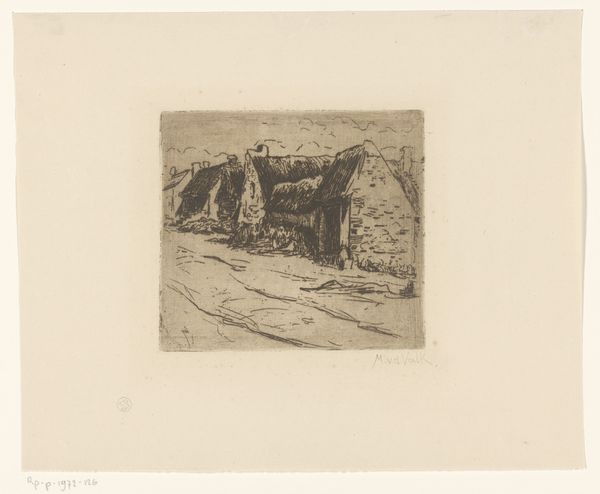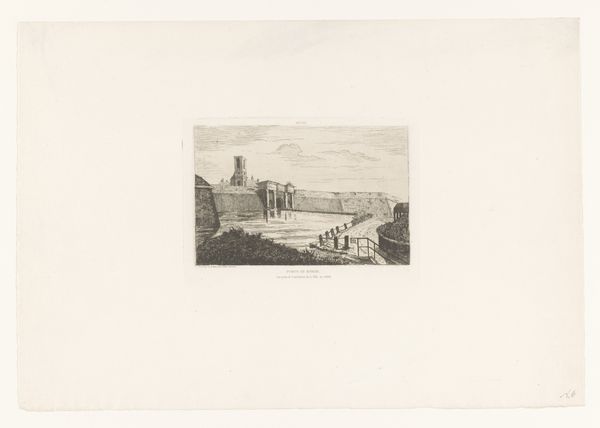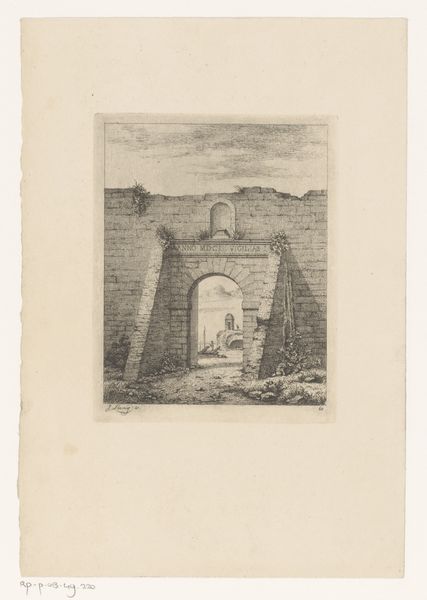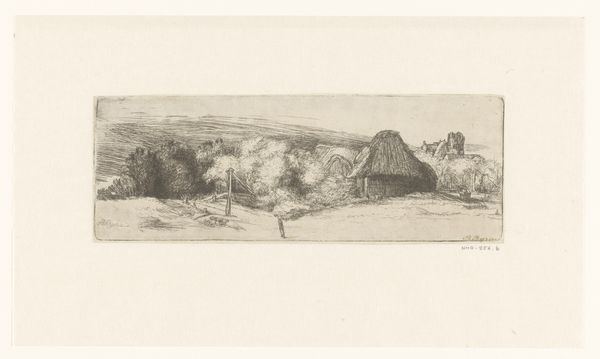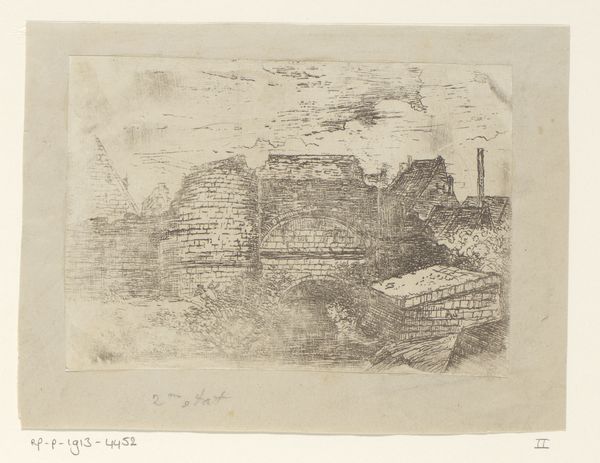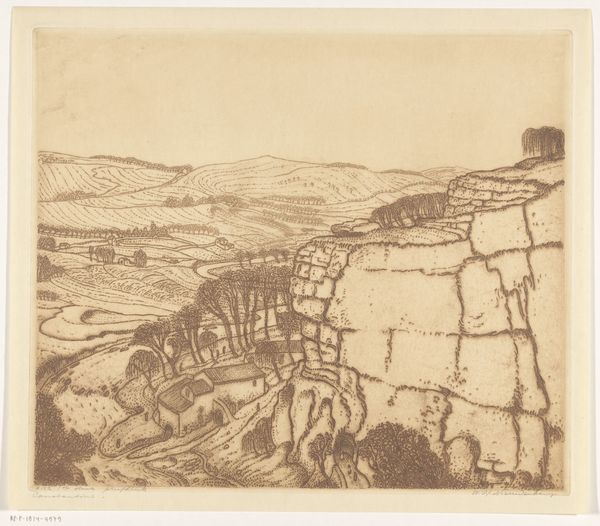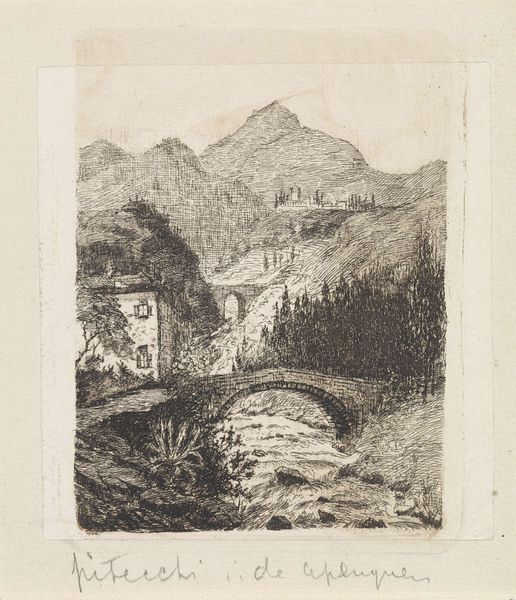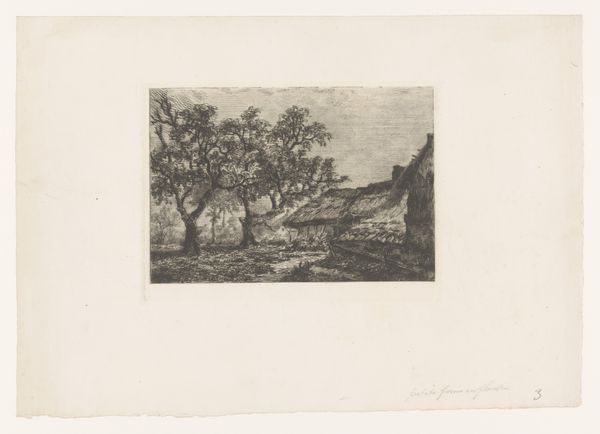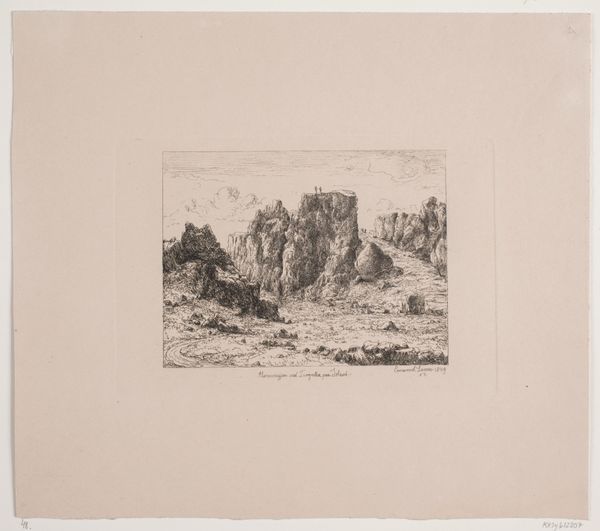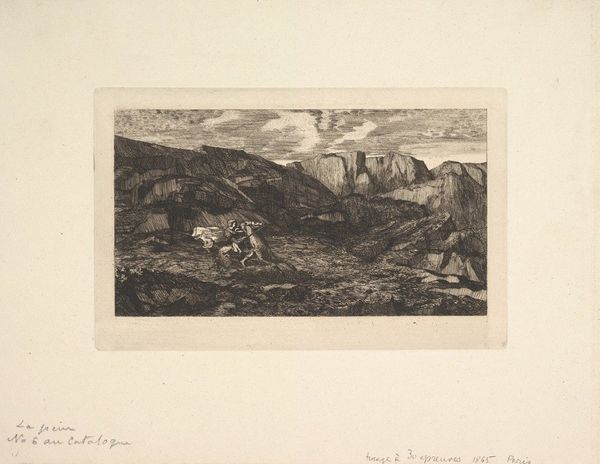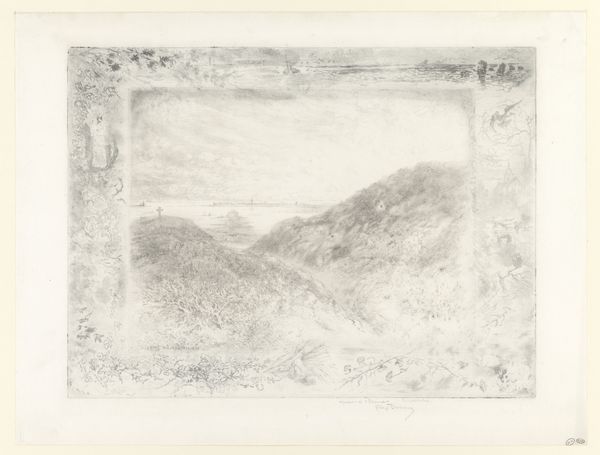
drawing, print, etching
#
drawing
# print
#
etching
#
landscape
#
etching
#
geometric
Dimensions: height 370 mm, width 430 mm
Copyright: Rijks Museum: Open Domain
Curator: This is Wijnand Otto Jan Nieuwenkamp's etching, "Heuvellandschap met aquaduct," created in 1911. Editor: It strikes me as an evocative composition, stark and quiet. The sharp geometry of the aqueduct contrasts intriguingly with the soft curves of the landscape. Curator: Nieuwenkamp was fascinated by the intersection of human construction and natural environments. This piece reflects a common early 20th-century concern: the impact of industry on nature and a kind of melancholic longing for pastoral ideals. Editor: The meticulous lines creating a landscape. What are the materials and their relationship to form? I’m also noticing the repeated use of arch motifs throughout—in the aqueduct, echoed faintly even in the distant hills. Is it just about harmony, or a silent dialogue between human creation and nature’s inherent patterns? Curator: I think the dialogue you observe is key to understanding Nieuwenkamp's work within the broader artistic movements of his time. Many artists were grappling with representing both progress and its discontents. His chosen style can be regarded as traditional for its era while addressing contemporary questions through visual narrative. Editor: I agree. There's an inescapable tension—almost an anxiety. Perhaps it comes from the scale; how the landscape dwarfs the people in the scene, how small the birds are, yet how close we are drawn to the rigid architecture, all accomplished with etching. A curious formal choice contributing powerfully to mood. Curator: The very act of creating a print, multiple identical images from a single plate, speaks to early twentieth-century anxieties about mass production and commodification, a prevalent theme during that time, echoed poignantly here. Editor: Seeing it like this offers interesting viewpoints to consider. The linear forms speak not of industry, but perhaps anxiety related to such times. I see the structure now, with its subtle tones and balanced visual weight as so human in its construction, as you mentioned earlier. Curator: Absolutely. The aqueduct as a metaphor is a product of our own anxieties that transcends the immediate visual impact, giving the scene both weight and, strangely, poignancy.
Comments
No comments
Be the first to comment and join the conversation on the ultimate creative platform.
